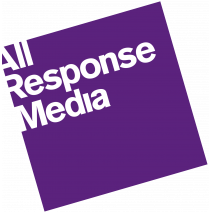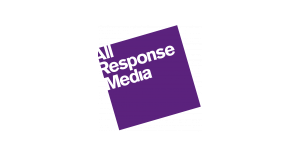This year’s Black Friday falls on 24th November, and will be followed by Cyber Monday on the 27th. Introduced to the UK in 2010 by Amazon, emulating the US event, it has been labelled by many as the ‘biggest shopping day of the year’ where retailers offer big discounts on products in the run up to Christmas. Whilst this creates a lot of opportunities for advertisers to capitalise on the high shopping sentiment in the market, the market can also be saturated around that time of year, as there is a surge in advertising aimed at driving traffic into shops or online.
To get noticed and deliver success, advertisers need to look for clever ways to stand out and drive efficiency rather than simply fighting for share of voice during a period they will be paying some of the highest costs per thousand impacts (CpTs) of the year due to the demand.
How big of an opportunity is the Black Friday weekend for brands?
• Britons spent around £5.8 billion over four days in 2016, which is 15% more than the previous year, according to VoucherCodes.co.uk and the Centre for Retail Research. Online retailers took most of this, with 68% of purchases happening on mobile devices (Channel Advisor).
• Google Trends 2016 indicates an increase in search terms such as “deal”, “discount” and “sales” during that period. “Deal” and “discount” were more searched for during Black Friday than at any other time, whilst they trailed only “sales” during Christmas.
• Hitwise shows that traffic on websites such as Amazon, eBay and Argos is also at peak that time vs. rest of the year.
How did this influence brands’ media strategy last year?
Comparing 13th to 28th November 2016 vs. the previous two weeks, there was a 74% increase in TV spends, and increased radio (+62%) and press (+31%) output, indicating brands focused spend prior and during the event last year.
Growth is especially true for Amazon, who spent almost £6.1m (+305%) more in 2016 vs. 2012. They also saw 30 million more visits on their website in 2016 than in 2015 according to Hitwise.
Overall, traffic was up 46% year-on-year pre 6am, and up 208% at 5am on Black Friday morning. Argos saw the most sales between 12am and 1am, whilst 7am and evening traffic was also up for Currys PC World according to Vouchercloud.
All Response Media Viewpoint
With the Black Friday phenomenon growing bigger every year and the majority of purchases reportedly happening on mobile devices, there is a real opportunity for brands to use TV as part of their media strategy to reach audiences often multi-screening when viewing the box.
As trends from last year suggest, more and more consumers are making purchases late at night and early in the morning. Taking advantage of the attractive post-peak and night time pricing will help keep cost per acquisition (CpA) low, whilst limiting risk.
We also employ historic spot attribution analysis for our clients where we measure which factors such as station, programming etc. are driving the best response. By doing so, we can pinpoint the most suitable peak spots for a brand, providing a proven schedule and ensuring client budgets are used efficiently.
November is a very busy period in the TV advertising world, and availability can be impacted as a result. To increase opportunities to speak to your audience, especially in a short window, we recommend advertisers whose traditional strategy may only focus on TV to also consider how other media can be used to reach their target audience and deliver different messages.
Finally, launching a new creative for the occasion is not a necessity if you already have a strong offer. Many consumers’ attention will be particularly drawn to advertisements at this time of year anyhow, offering a great occasion for brands to ‘ride the Black Friday wave’ and maximise the opportunity presented by a fabricated retail colossus.


